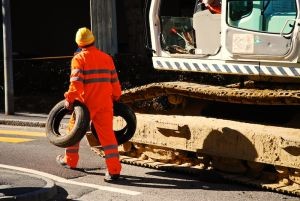Interiano-Lopez v. Tyson Fresh Meats, a case from the Nebraska Supreme Court, involved a claimant who was living in Iowa and working at a meat packing plant in Nebraska. He had various responsibilities as a result of his employment, but one of his jobs was cutting open the stomachs of cows. This part of the cow is known as the paunch in the meat packing industry, and the contents of the stomach are supposed to dump out on the factory floor as part of the dump paunch line of production.
 In October 2013, claimant was working on the line with a trainee, and allegedly failed to properly hanging the meat on meat hooks. As a result, pieces of meat kept falling off the hooks as they passed buy the dump paunch line. In order to cut the paunch, claimant had to lift each piece of meat back onto the hooks in a proper manner, and his arms were getting very tired. Continue reading
In October 2013, claimant was working on the line with a trainee, and allegedly failed to properly hanging the meat on meat hooks. As a result, pieces of meat kept falling off the hooks as they passed buy the dump paunch line. In order to cut the paunch, claimant had to lift each piece of meat back onto the hooks in a proper manner, and his arms were getting very tired. Continue reading
 Massachusetts Workers Compensation Lawyers Blog
Massachusetts Workers Compensation Lawyers Blog










